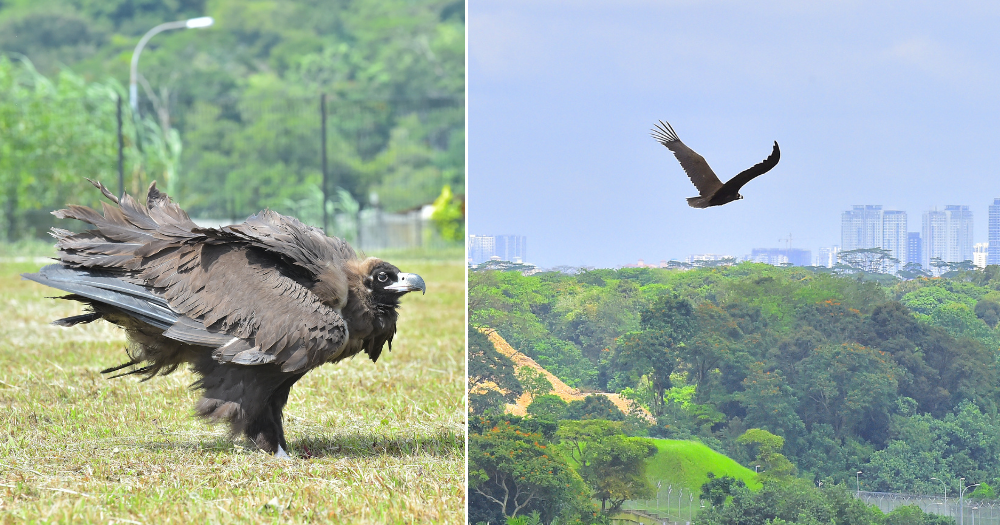Follow us on Telegram for the latest updates: https://t.me/mothershipsg
After days of recuperation and much cajoling, the rescued Cinereous vulture has finally managed to take flight and is now free in the wild.
Free in the wild, still in Singapore
In a joint statement to Mothership, the National Parks Board (NParks) and Mandai Wildlife Group updated that the Cinereous Vulture was observed to be eating well and was regaining its health.
As part of the vulture’s rehabilitation, it was allowed to fly at around noon on Monday (Jan. 10).
The vulture flew and gained height before landing at a nearby farm initially.
It then took off and was last seen flying over the canopy of a forest a distance away.
This was the third release attempt thus far.
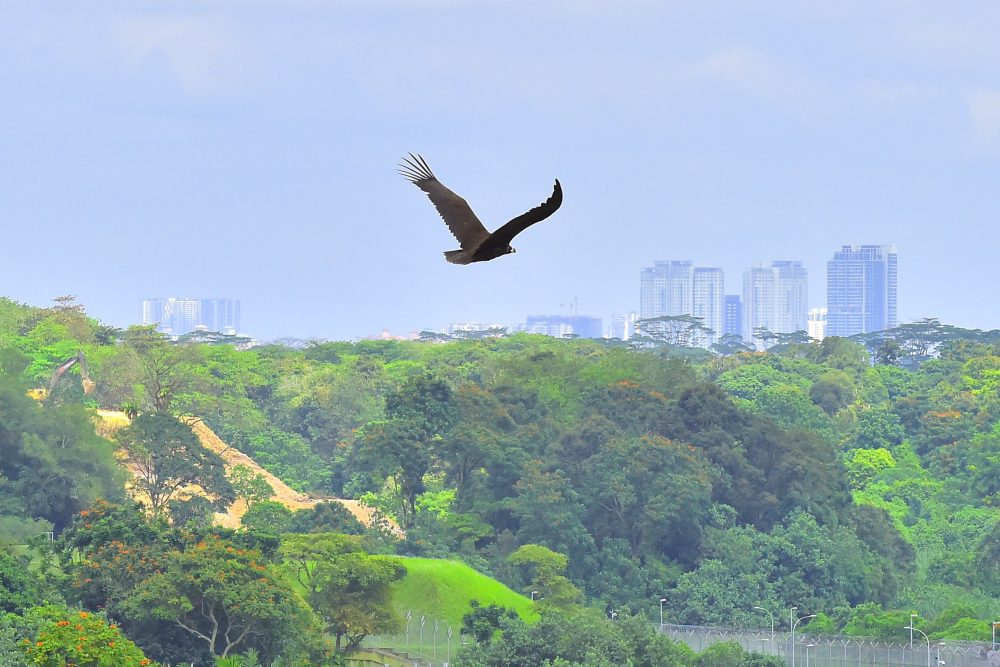 Photo by NParks.
Photo by NParks.
NParks added that it will continue to monitor the area until the vulture is able to continue its journey to its wintering grounds.
Extra considerations for the vulture's release
NParks and Mandai Wildlife Group said that some wild birds require a staged release process, in addition to considering weather conditions.
Mandai Wildlife Group routinely conduct flight tests for rehabilitated birds to test their flight ability and flight muscles as part of the pre-release conditioning.
For the vulture, there were additional considerations for its flight test compared to other species.
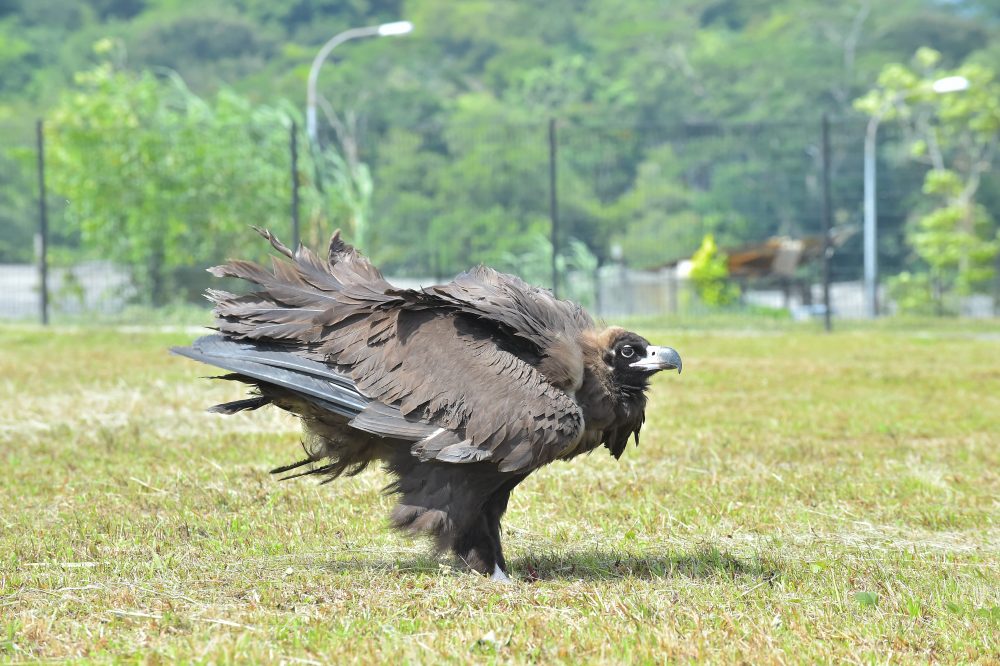 Photo by NParks.
Photo by NParks.
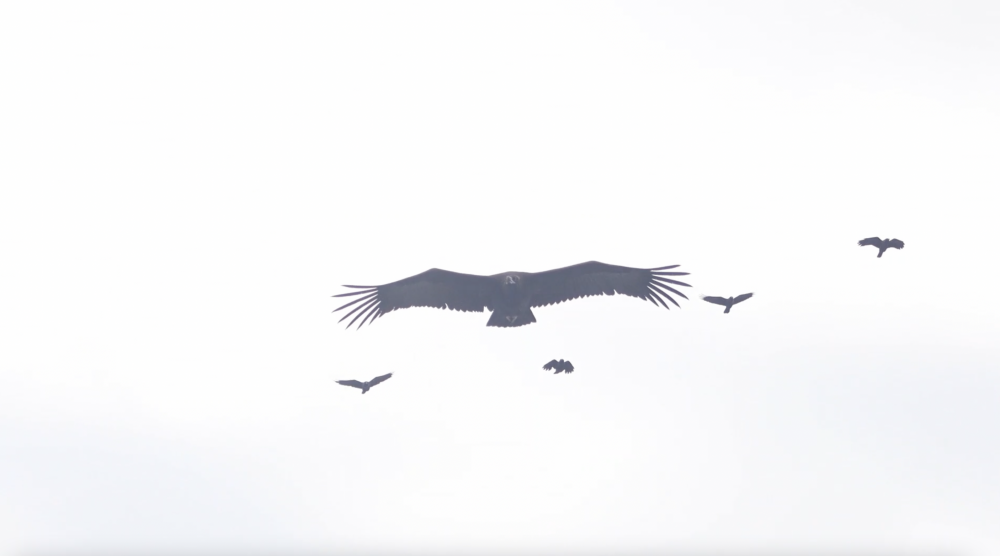 Screenshot from NParks video.
Screenshot from NParks video.
An adult Cinereous vulture has a wingspan of about 2.5m to 2.9m.
Given the large size of the bird, the flight tests had to be conducted outdoors in a large open space to allow for easy retrieval of the bird, if needed.
The location also had to be relatively flat to avoid risks of injury as its flying capability had not been established then.
Since its rescue on Dec. 30 last year, the vulture was first observed to be able to take flight on Jan. 5 but it could not sustain the flight that day.
After it displayed the ability to fly last week, the authorities chose to conduct the third release attempt at a location with a higher altitude than before.
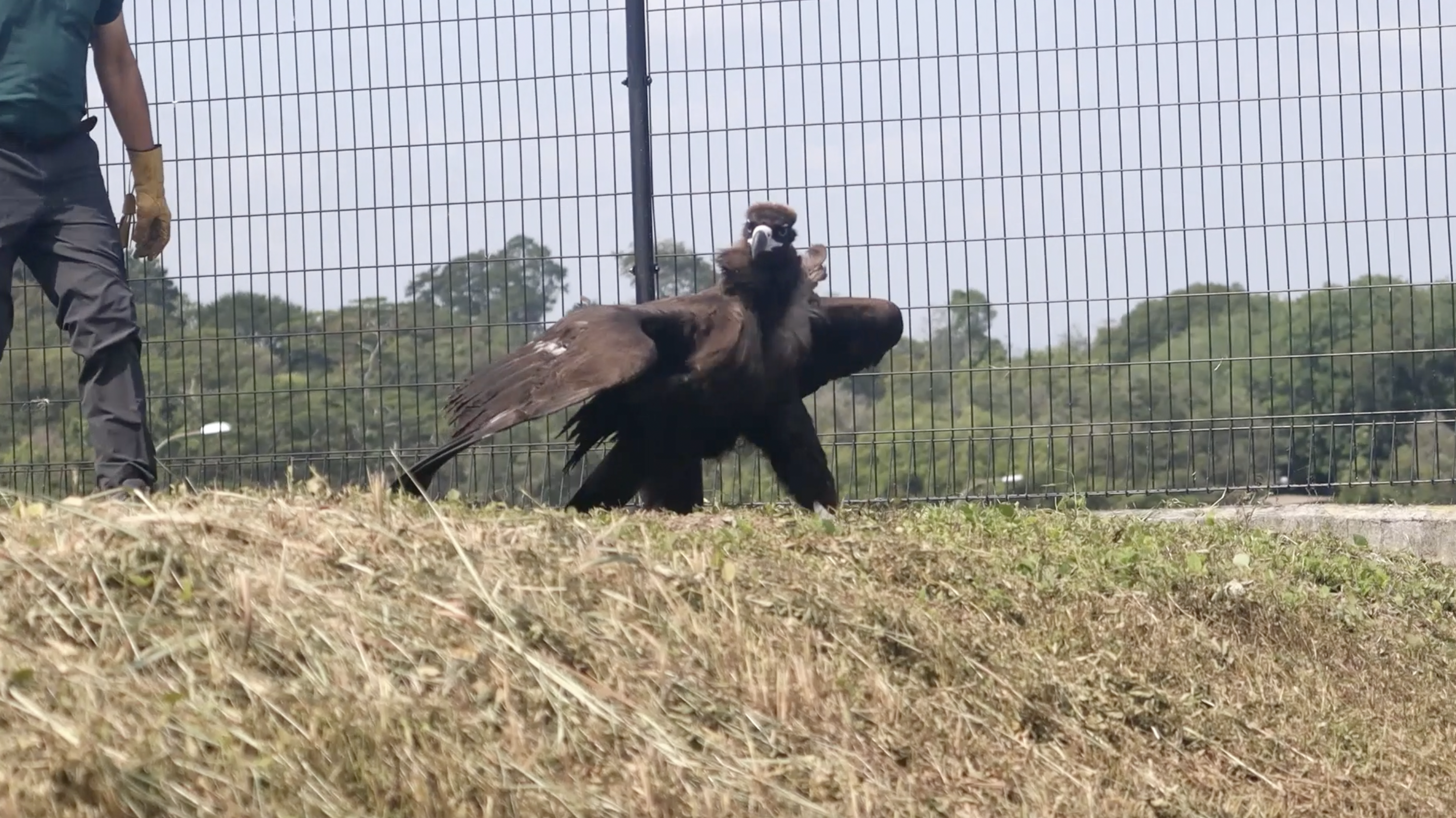 Screenshot from NParks video.
Screenshot from NParks video.
Watch a summary of what happened during the release attempt on Monday:
Previous release attempts
The vulture first arrived in Singapore in late-December 2021, along with five other Himalayan griffon vultures, leading to photographers flocking to the Singapore Botanic Gardens where the group was perched at.
This was the first time the Cinereous vulture has been sighted in Singapore.
On Dec. 30, 2021, it crash-landed near Farrer Road, and was brought to JBP for veterinary care.
A first attempt to release it was conducted on Jan. 4, but to no avail, due to changes in the weather condition. Large birds like the vulture rely on thermal uplifts — pockets of hot air near the ground rising — for flight.
The first attempt only lasted 30 minutes as a result and the vulture was brought back for further recuperation.
A second attempt was carried out the next day, which once again, proved unsuccessful.
The vulture however, made some baby steps — it managed to fly around 50m before landing. This was considered "promising", as it was the first time the vulture had been observed flying since its rescue.
The staff decided to call it day after three hours, due to a change in weather condition, and the vulture was brought back to JBP.
More about the Cinereous vulture
The Cinereous vulture is native to Europe and northern Asia, and usually winters to northern India, the Middle East and occasionally South Korea.
Individuals sighted in Southeast Asia, like this rescued vulture, are vagrants who go off course from their usual migratory pathway.
Like most vultures, the Cinereous vultures are scavengers that feed primarily on animal carcasses. They are also unlikely to prey on people or live animals.
NParks and Mandai Wildlife Group advised members of the public to stay calm and keep a distance if they ever encounter a vulture.
They should not approach, provoke, or feed the animal, the authorities added.
The public can contact NParks at 1800 471 7300 or wildlife rescue charity Acres at 9783 7782 to report the encounter.
Top photo courtesy of NParks
If you like what you read, follow us on Facebook, Instagram, Twitter and Telegram to get the latest updates.
